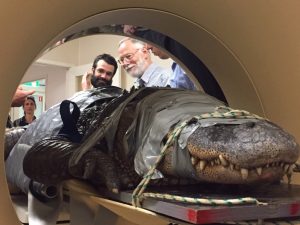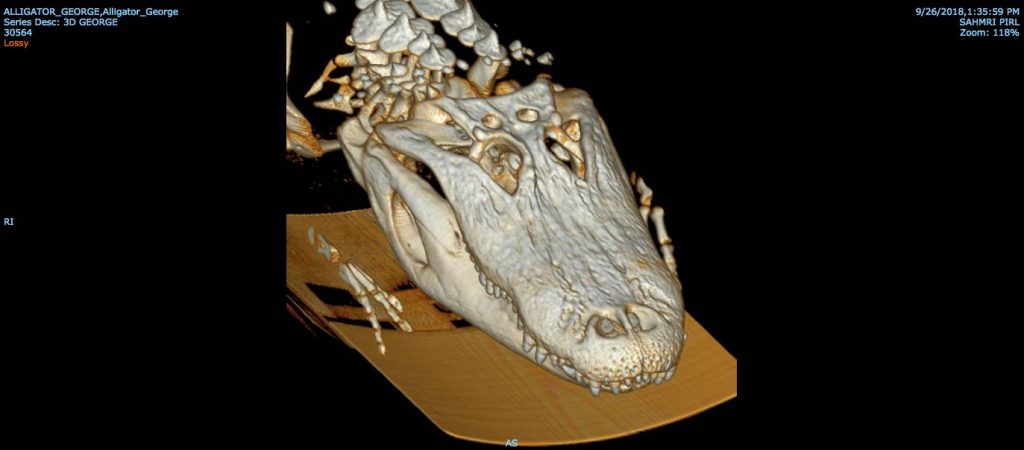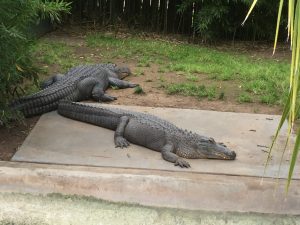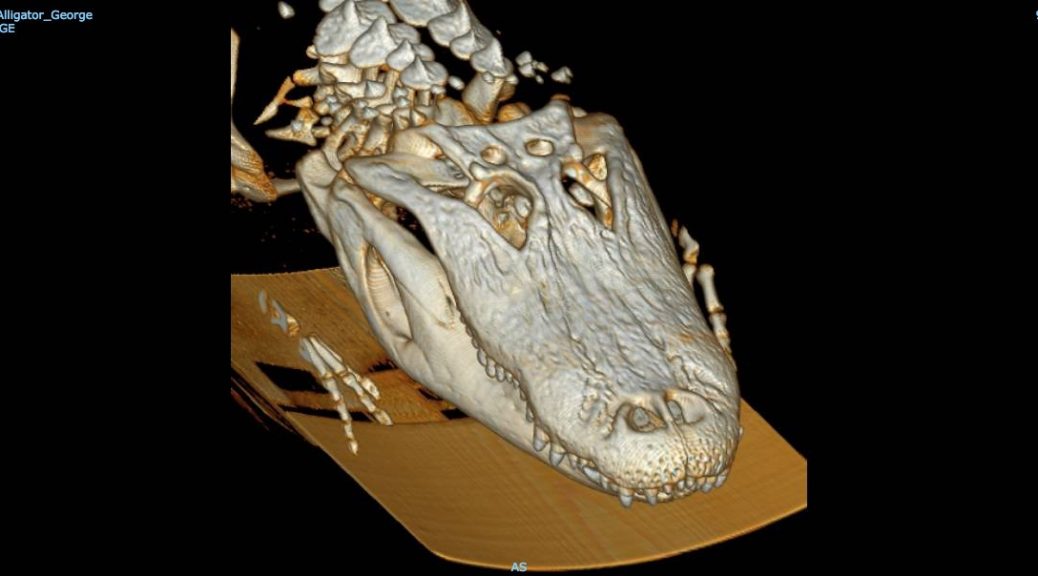Wildlife Matters

Dr Tim Kuchel and zoo veterinarian Dr David McLelland talking about George’s exam
The Large Animal Research and Imaging Facility had an unusual visitor. George the Alligator from the Adelaide Zoo came by for a temporal mandibular joint and dental check-up, courtesy of our 16 slice Phillips CT scanner.

A CT scan of George, revealing bone structure
It had been recognised over the past two years that George did not open his mouth wide or quickly, and instead took food gently and played with it before swallowing it slowly in a most unlikely Alligator way. The differential diagnosis most likely was temporomandibular joint (TMJ) pathology which may have been able to be diagnosed/described by a CT scan. George was physically restrained, and his mouth secured (the muscles to open the mouth are quite weak, fortunately) and his 180kg body carried by 6 staff and placed into the NIF funded 16 slice CT scanner. Then the Alligator was scanned prone in a 16-slice Philips CT scanner using a 3D protocol (KV/mA: 120/350; field of view: 350 mm; matrix: 256×256; thickness/overlap: 1 mm/0.5 mm). The CT protocol was designed to give good high-resolution data, optimal contrast and good signal-to-noise ratios. Unfortunately, whilst good quality images were taken of the TMJ and adjoining tissue, no obvious abnormality was detected. Normally treatment with a non-steroidal anti-inflammatory drug (NSAIDs) would be employed to help with a diagnosis and potential efficacious treatment, it has been decided that the downside of the use of NSAIDs in a slow metabolising reptile was not outweighed by the clinical difficulty the ‘jaw opening problem’. George is not losing weight, is an old Alligator, so careful observation of his wellbeing will be undertaken over the next 6 months to ensure that his welfare is not adversely affected.

George, on the left, next to his girlfriend, after coming home from LARIF
This story was contributed by LARIF and the Adelaide Zoo



